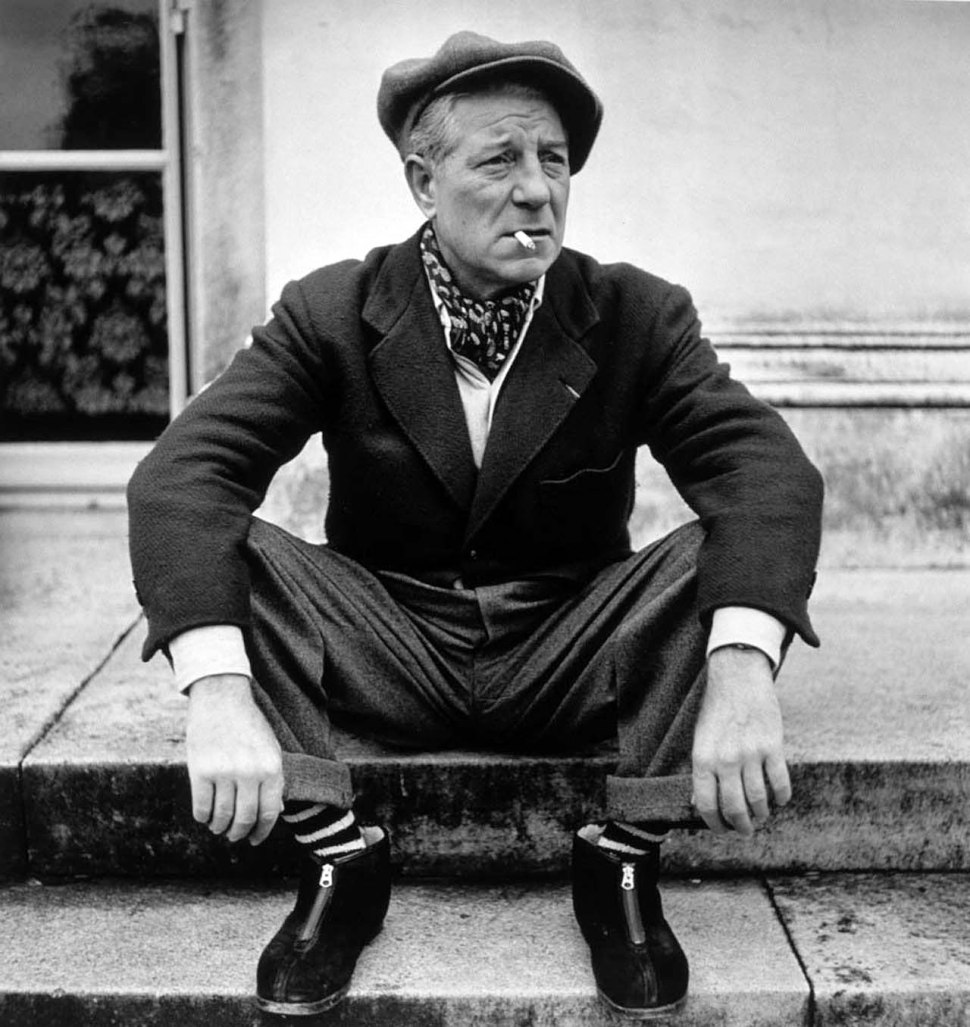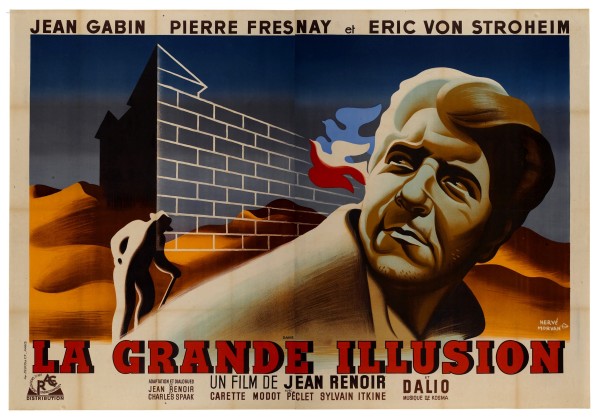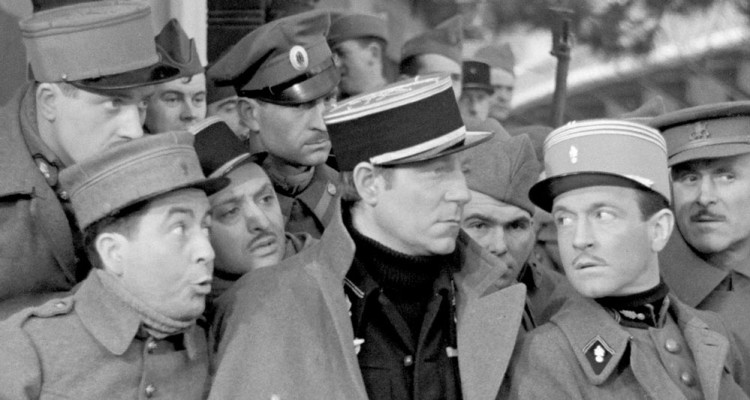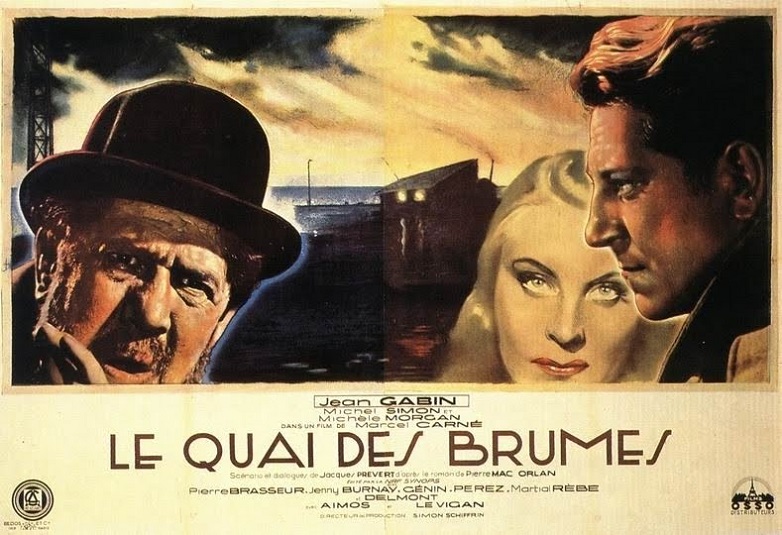The most popular French actor of the pre-war period, who redefined the role of the anti-hero and made a hero out of the common man struggling for a foothold in a society ruled by class, was undoubtably Jean Gabin (1904-1976)
With glacier-cool onscreen persona that was to influence the likes of Humphrey Bogart, Robert Mitchum, Jean-Paul Belmondo and Alain Delon in later years, Gabin also played a major role in the humanistic wave of early Film Noir and Poetic Realism.
The son of Cabaret performers, Jean Gabin began his career in Parisian music halls and operettas in his late teens, eventually picking up various cameo roles in Silent cinema. But it was his subsequent work in the French ‘Talkies’ of the late 30’s that showcased the unique talent of a timeless actor.

Below are three notable examples of his work, incidentally all released between 1937 and 1938…
Pépé Le Moko (1937)
Director Julien Duvivier had collaborated with Jean Gabin on two other occasions, however it was this film that propelled the actor to the international stage with his portrayal of romantic criminal antihero Pépé Le Moko, or the Toulon man.

Gabin plays a wanted man on the run from the Metropolitan Police in France, hiding amidst the winding labyrinth of the Algerian Casbah. Inspector Slimane (Lucas Gridoux) hatches a plan to lure our antihero into the city by baiting him with Gaby (Mireille Balin), a beautiful Parisian mistress of a rich businessman.
To our homesick protagonist, Gaby represents all that is Paris… the sound of her accent, the look of her designer dress, the smell of her perfume. In the end it is his longing for home that proves to be his ultimate demise.
With it’s clever array of sweeping landscape shots from above the Casbah, contrasted with claustrophobic scenes on ground level through twisted stairways and lanes, Duvivier alludes to his audience the entrapment and impending detriment awaiting the antihero around every narrow bend. Indeed it seems as if the refuge of the Casbah is merely another form of imprisonment for Pépé Le Moko.

An early example of the French movement known as Poetic Realism and predecessor to film noir, this film was also a major influence on later gems such as The Third Man (1949) and Casablanca (1942). It has since been remade into several Hollywood versions.
La Grande Illusion (1937)

Quite simply a masterpiece from a masterful director...
Rather than simply calling The Grand Illusion an antiwar film, it would be more accurate to say director Jean Renoir uses war as a backdrop in a study of class relationships and human spirit between warring European nations; and before the rise of Fascism and the 2nd World War. It explores the layered dynamics of class, and depth of human spirit in the face of hardship. Even amongst times of war, why should one make enemies?
The film’s title derives from the book The Great Illusion by British economist Norman Angell, who argued that:
‘war is futile because of the common economic interests of all European nations’.

In this case the grand illusion seems to be that within the confinement of the World War 1 prison camp gates, all people would be treated with mutual respect as human beings despite their class or race. To many in today’s world, this humanistic value seems bizarrely out of place in a time of conflict.
With a rich and talented cast including the great Actor and Director Erich von Stroheim (who can forget his performance as Captain von Rauffenstein?). Jean Gabin plays aviator Lieutenant Marechal; a working-class Frenchman who is shot down over German occupied airspace with the aristocratic Captain de Boeldieu (Pierre Fresnay). Imprisoned amongst other soldiers they devise a clever plot for an early release.
With La Grande Illusion Renoir set the benchmark almost unattainably high for the ‘great escape’ film. This classic still speaks profoundly today, it has largely influenced filmmakers and has dated little. Regarded by critics and historians as a masterpiece of French cinema, Orson Welles once described it as one of the movies he would take with him ‘on the ark’.
Le Quai Des Brumes (1938)

An army deserter walks through the fog alongside a lonely road. Through this establishing scene, Marcel Carné set the atmosphere for Le Quai Des Brumes or Port of Shadows. Could the director have possibly known what impact the Mise-en-Scéne was to have on future filmmaking internationally?
Winner of the 1939 Prix Louis-Delluc award in France, the film went on to astound the global audience… the first of it’s kind to be called film noir by critics.
The characters we are introduced to seem to wander in from the fog like lonesome souls, only to return to the shadows from which they arrived at some point throughout the film. Gabin’s humanistic and deeply relatable portrayal of the penultimate drifter: abandoning his war-time post and passing through the port of shadows on his road to refuge and redemption, is simply iconic French cinema.
For us, the on-screen pairing of characters Jean (Gabin) and Nelly (Michelle Morgan) is perfect, however, by no means harmonious. We are pressed with the sobering feeling that somehow our protagonist will always be alone.

A deeply moving film depicting a deeply relatable human tale; with Le Quai des Brumes Jean Gabin changed the way the hero is perceived on screen. The gloomy set, filmed through the effects of a thick fog, paint a dreamlike backdrop for the souls that pass through it.
Based on the novel by Pierre Mac Orlan, Channel 4 Film describe it as:
‘One of the finest examples of French pre-war cinema… A powerful tender gem’.
Beloved antihero… lonesome drifter… anti-war hero…
With 3 classic films in the space of 2 years Jean Gabin redefined the way the protagonist was perceived by audiences, in turn setting the mould for film noir and Poetic Realism and influencing those that followed in years to come. Some 75 years later his performances remain both profound and poignant.